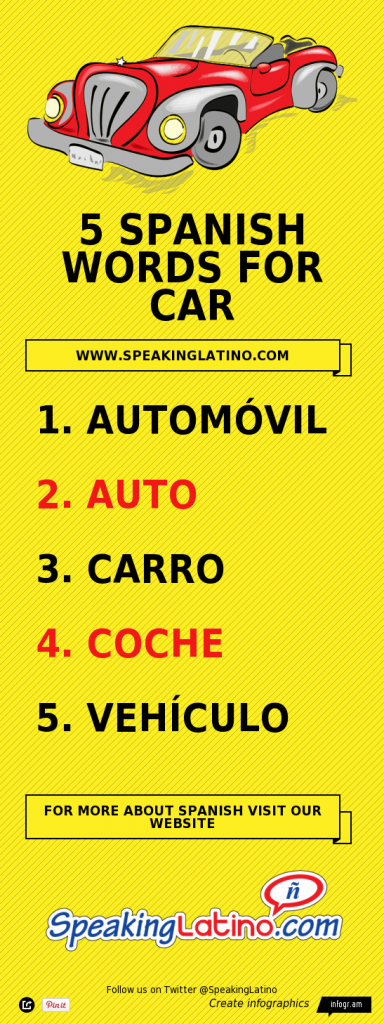 As with all different areas of languages, vocabulary dedicated to car parts varies from one country to another. In Spanish, the car is el auto in one country, el coche in another, and el carro in a third.
As with all different areas of languages, vocabulary dedicated to car parts varies from one country to another. In Spanish, the car is el auto in one country, el coche in another, and el carro in a third.
Let’s take a look at a couple of simple parts. In countries like Chile the clutch pedal that you press with your left foot to change gears in a standard car is called el embrague, while the same part in Venezuela and Colombia is called el cloche. The latter comes from the English word “clutch.” An even more extreme version of this occurs in Mexico where the clutch is pronounced el clooch, but spelled the same as in English.
Another good example is the bumper of the car. Depending on where you are, you may want a body shop to fix the defensa or parachoque (literally “crash stopper”), of your car after a minor fender bender.
If you park your car under a cherry blossom tree you will definitely have a hard time cleaning off the mess on the hood of your car when you leave. Be sure to ask for help cleaning el capó, la capote or el cofre.
And if one morning you wake up to discover that your son damaged your car’s tail pipe on a night out with his friends, be sure to look for a mechanic who specializes repairing escapes or moflers. Next time tell your son to be sure to use the high beams, luces largas (long lights) or luces de cruce (cross lights), to avoid bumps in the road.
Few things can compare to driving down the coast with the sunroof open and the wind in your hair. Of course, to be able to do this, your car needs to have a quema cocos (literally “head burner”) or a techo corredizo (sliding roof).
These are just some examples of how the vocabulary for car parts changes from region to region. What has your experience been with car parts vocabulary?
Check out these other articles about Spanish Lessons.